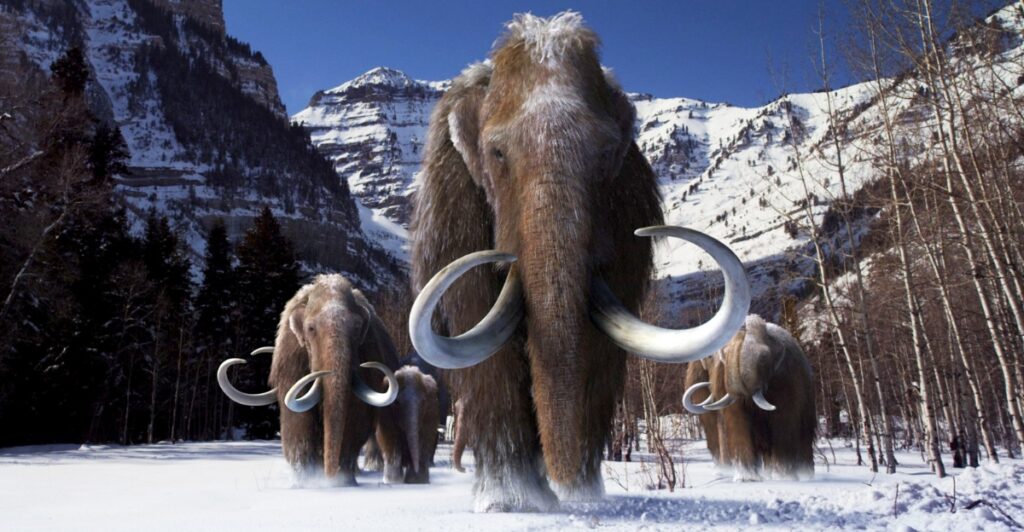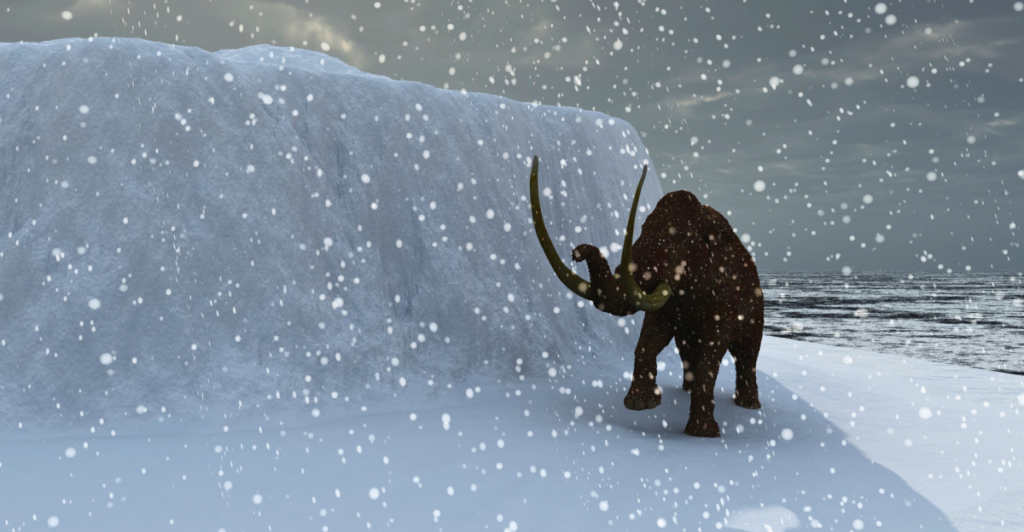
Woolly mammoths may have roamed North America thousands of years longer than scientists once believed. Recent research based on DNA found in Alaskan permafrost suggests these iconic creatures persisted until 5,000 years ago, 5,000 years later than previous estimates. The discovery was made using ancient DNA preserved in frozen dirt, offering a unique glimpse into prehistoric ecosystems and reshaping our understanding of mammoths’ final years on the continent.
Preserved Genetic Material

Ancient DNA, or genetic material preserved in the environment, played a pivotal role in this discovery. As organisms live, they constantly shed cells containing DNA. Tyler Murchie, a researcher at McMaster University, explains that even tiny bits of DNA can survive for thousands of years, especially when bound to mineral particles in permafrost. These microscopic remnants provide a window into ecosystems long gone, revealing details about extinct species like the woolly mammoth.
Permafrost Soil Samples

The study analyzed permafrost soil samples from Yukon, Canada, dating back to the Pleistocene-Holocene transition, a time of significant environmental change. This period, spanning 14,000 to 11,000 years ago, marked the decline of many large mammals, such as mammoths and saber-toothed cats. Despite these challenging conditions, the DNA data indicates that mammoths and horses survived in isolated Arctic regions far longer than previously thought, challenging long-held assumptions about their extinction timelines.
Extracting DNA

Extracting ancient DNA from the soil is challenging. The fragments found in the samples were tiny, often less than 50 base pairs in length. However, researchers were able to isolate millions of fragments from each sample. By analyzing these small pieces, scientists pieced together a genetic story that spanned tens of thousands of years, revealing the persistence of mammoths and other species even as their populations dwindled during a rapidly changing climate.
Studying Ancient DNA

One key advantage of studying ancient DNA is its ability to shed light on species that rarely fossilized. While fossils require specific conditions to form, DNA is constantly released into the environment as organisms live. This means that even without bones, researchers can learn about the presence of species like mammoths. These genetic breadcrumbs help fill gaps in the fossil record, offering new insights into ancient life and the ecosystems they inhabited.
The DNA Evidence

The DNA evidence indicates mammoths and horses survived in Arctic regions until about 5,000 years ago, long after they were thought to have disappeared. These populations didn’t vanish suddenly but declined gradually due to a combination of factors. Climate changes and human hunting likely played roles, but neither was the sole cause. This nuanced view suggests extinction was a complex process influenced by overlapping pressures rather than a single catastrophic event.
Away From Human Contact

Interestingly, earlier studies had suggested mammoths survived on isolated islands away from human contact until around 4,000 years ago. However, this new research shows that small populations of mammoths coexisted with humans on the mainland of North America during the Holocene, even as their numbers diminished. This finding highlights how ancient DNA can rewrite our understanding of history, revealing surprising survival stories in challenging environments.
The Extinction Of Megafauna

Scientists have long debated the extinction of megafauna like mammoths. Were they hunted to extinction by human paleo-hunters, or did rapid climate shifts doom them? This study shifts the focus from this either-or debate. Lead author Hendrik Poinar suggests that extinction was far more nuanced, involving a combination of pressures. While human activity and climate change certainly influenced these species’ decline, the exact tipping point remains unclear.
Arctic Permafrost

Arctic permafrost offers a unique advantage for ancient DNA research due to its freezing temperatures, which preserve genetic material exceptionally well. These frozen layers act as time capsules, storing traces of extinct animals and ecosystems. However, as global temperatures rise and Arctic ice melts, researchers warn that valuable genetic data could be lost forever. The race is on to study this material before it disappears, taking ancient life’s secrets with it.
New Insight Into Prehistoric Life

The permafrost samples analyzed in this study spanned 30,000 to 5,000 years ago, offering a broad window into prehistoric life. During this time, the environment underwent dramatic changes, impacting the species that called it home. Despite these challenges, mammoths and horses managed to survive far longer than expected. This discovery underscores the resilience of some species and the value of ancient DNA in uncovering their stories.
Insight Into Mammoth Survival

This research not only provides insight into mammoth survival but also demonstrates the broader potential of ancient DNA studies. By analyzing genetic material preserved in the environment, scientists can reconstruct entire ecosystems, even those that disappeared millennia ago. These findings offer a richer understanding of Earth’s history and the complex interactions between species, climate, and human activity that shaped our planet’s biodiversity.
Fragility Of Ancient Data

The findings also remind us of the fragility of ancient data stored in permafrost. As Arctic regions warm, this invaluable resource is rapidly disappearing. Scientists are urging increased efforts to preserve and study permafrost before it’s too late. Each sample holds a treasure trove of information, from extinct species like mammoths to the ecosystems they inhabited, offering crucial lessons about resilience, extinction, and environmental change.
Symbols Of The Ice Age

Woolly mammoths, once iconic symbols of the Ice Age, continue to captivate us through discoveries like this. The study of ancient DNA reveals their resilience and offers a deeper understanding of their world. As researchers uncover more about these prehistoric giants, they also highlight the importance of preserving Earth’s fragile environments to safeguard the stories hidden within them. Through science, these ancient creatures live on, inspiring wonder in modern times.
Stay connected with us for more stories like this! Follow us to get the latest updates or hit the Follow button at the top of this article, and let us know what you think by leaving your feedback below. We’d love to hear from you!







